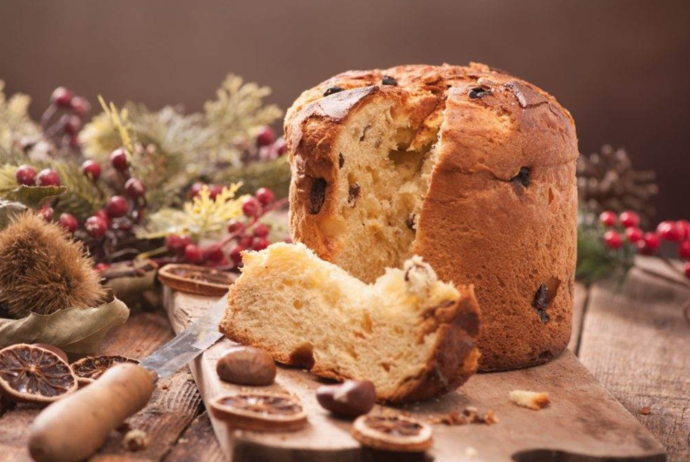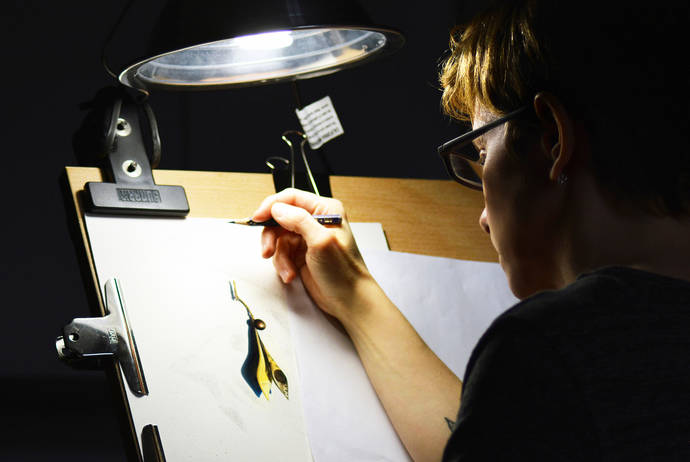“Things to do on a Tuesday night,” as I was reading this article on USA Today that mentioned how “weekday nights are a good time to experience what the city has to offer” I realized that my calendar has a one of a kind event marked down for next Tuesday, January 10th, when Tredici Bacci will be playing a showcase at The Standard East Village Penthouse (25 Cooper Square). The concert, which is free of charge as long as you RSVP at [email protected], has already been defined “an Italian soundtrack-obsessed evening of music” led by a 28 year old classical composer and punk rock guitarist named Simon Hanes. Simon’s obsessed with all things Morricone, Spaghetti Western, and classic Italian film soundtracks from the 1960’s/1970’s.
Consisting of close friends and fellow classically-trained musicians, the Tredici Bacci band is an ambitiously sizeable 14-piece ensemble based in Bushwick who are playing clubs throughout BK in 9 - 14 piece configurations. Cited by Rolling Stone in 10 New Artists You Need to Know: November 2016, Tredici Bacci has just released its debut album, Amore Per Tutti, “a record of colorful pop explorations that are rooted in musical timelessness, but are also steeped in modernity through the spirit of collaboration, checking all pigeon-holes and categorizations at the door. Hanes’ depth of knowledge of music is made apparent through the wide variety of styles, techniques and moods that he is capable of utilizing alongside his highly talented band, together showcasing true, unbounded musicianship.”
The album's first single was “Nessun Dorma,” which brings Simon’s dreams to life as he joins forces with eccentric Italian multi-instrumentalist and composer Vincenzo Vasi to reinvent this classic Puccini operatic aria. “Vasi’s exuberant singing and Italian lyrics would feel right at home with motorbikes zipping by through a narrow cobblestone Roman street, while the band’s accordion and piano lines dance perfectly in stride with the mid-tempo percussion and flawless brass punctuation.”
Over the last few years, Simon has worked tirelessly to channel his deep love and infatuation with 1960’s/1970’s soundtrack music into his own personal vision and homage to the style through dedicated songwriting, and the integration of the totality of his musical influences. After graduating from the New England Conservatory and spending time playing bass in the then-Boston-based No(ise) Wave unit Guerilla Toss, Hanes started working as an arranger, composer, conductor, and guitarist, and went on to assemble a band of epic orchestral proportions. But let's learn more about Tredici Bacci directly from him.
You've been inspired by 1960/1970 soundtrack music. Are there any specific films and scores that have influenced you the most and why?
“I’d like to take a trip down memory lane if that’s alright, to the early days. In the house where I grew up, the heating system was as such that there was a vent on the floor, in the corner by the kitchen table - this was my happy place every winter. I remember distinctly a very specific day - having just acquired a CD copy of the soundtrack to The Good, The Bad, and The Ugly - sitting on the heater vent, staring off into space, and listening to that music again and again on repeat for weeks to come.
But that was quite some time ago, and the years I’ve had to explore since that formative experience have led me to discover hundreds scores that have inspired and influenced my own work. There are two that stand out very strongly in my mind - Bernard Hermann’s soundtrack to Vertigo, perhaps the richest soundtrack to a film ever composed, in terms of harmonic language, orchestration, and emotional content - A real masterpiece!
The other is Nino Rota’s score for Juliet Of The Spirits, which will come into discussion more later - Rota’s work, particularly for this film, contains a very specific kind of magic, an imaginary ensemble of pawn-shop organs, surf guitars, squealing winds and operatic voices, supported by an incredible amount of orchestrational know-how.
You particularly like Morricone, have you ever met him or seen him play? What would you tell him if you had the chance to speak to him.
“Every person who takes influence from the linage of Italian soundtrack-pop recognizes Morricone as its consummate master; the trailblazer of the genre. He's the maestro! And since the period of the maestro's work that I love so deeply took place quite a few years ago, my connection to him is as a representative of the past - each time I sit down to write a piece for Tredici Bacci I am symbolically calling out to Morricone for inspiration and guidance. This, at least, is what I tell myself when the thought that I have never seen the maestro in person, and perhaps never will. The unhappy reality is that the true blossoming of my admiration for the man coincided with his being less and less able to tour, something he has been doing for many years, despite the fact that he could have retired about 25 years ago (the love of music clearly flows in every fiber of his being). When I close my eyes and imagine our meeting, I begin to well up with tears of joy.”
How was Tredici Bacci created and where does the name come from?
“The name of the group was inspired by the number of people who I had initially roped in to start the project (13 of my closest music school chums) - I wanted to kiss each one for agreeing to embark on this adventure with me! also, it had a certain sexy ring to it...
But at the time, my understanding of the Italian language was severely limited, and as such, somehow my research led me to serendipitously (and inexplicably) add another C to "Baci" - turning it into something akin to "kissses." When we realized our error, we discussed it and decided that it somehow was an accurate reflection of the band - a kind of metaphor for our path to this music as Americans (and Canadians) who weren't alive to experience the heyday of Italian film soundtracks from the 1960s/70s, but love it deeply all the same.”
Aside for film composers are there other Italians that have inspired you? Amore per tutti is a reference to Fellini.
“Yes, Fellini is definitely a huge inspiration for me - and “Amore Per Tutti” is a somewhat thinly veiled homage to his film “Juliet Of The Spirits” which has had an utterly profound effect on my life. In fact, most of my non-musician Italian influences are actors and directors- Anna Magnani, Franco Nero, Elio Petri, Marco Ferreri and Italo Calvino. And even though she’s a musician, I have to mention Mina - she’s an absolute legend.”
Tell us about your Nessun Dorma and collaborating with other musicians, in this case with Vincenzo Vasi?
“There was something very magic about collaborating with Vinenzo Vasi, particularly because we’ve never had the pleasure of meeting face to face! But true artists would never let that get in the way of a beautiful partnership! I knew that doing my own arrangement of a complete classic like Nessun Dorma would be a great way to connect to the full heritage of the music that Tredici Bacci is referencing - but immediately there was a question about who would be the perfect voice to fit the track - We needed somebody who would simultaneously pay homage to what is the quintessential version of the song (Pavarotti) while still taking an entirely new approach to the music. We found that with Vincenzo, and when he sent me his version I was so happy I could hardly contain myself! Someday I would love for the two of us to make an entire record - I feel that our time of working together is only in the beginning stages. That is a special thing about all the collaborations on this record - each one has its own story, and I feel that each one could lead to a great deal more music in the future!”
Click here to listen Tredici Bacci "Nessun Dorma (featuring Vincenzo Vasi)"
Other shows:
January 25 @ TREDICI BACCI at Sunnyvale (1031 Grand Street, Brooklyn): https://www.facebook.com/events/213340169114131/
February Residency at The Stone (Corner of Ave C and E 2nd Street, Manhattan): http://www.thestonenyc.com/calendar.php?month=1
February 3 TREDICI BACCI PLAYS AMORE PER TUTTI W/ SPECIAL GUESTS! Featuring Jg Thirlwell, Charlie Looker, Ryan Power and more!
February 4 TREDICI BACCI PLAYS MORRICONE, ROTA, TROVAJOLI, THIN LIZZY AND MORE!
February 5 TREDICI BACCI PLAYS CONTEMPORARY WORKS!







































